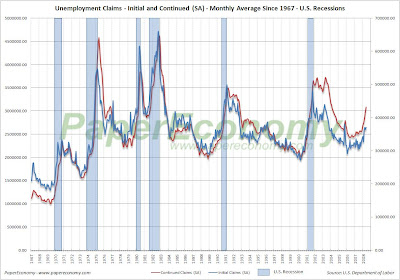
Today, the
Massachusetts Association of Realtors (MAR) released their
Existing Home Sales Report for April again showing the truly dismal and deteriorating circumstances that have befallen the Bay State’s housing market.
Whether it was a slow depression brought on by a local economy that has been eroding for over eight years, well over two years of steadily declining home sales and prices, the credit crunch, a looming recession, a palpable increase in inflation of necessities like food and fuel or just simply a change in attitudes toward the notion of a house as a vehicle for untold wealth, the regions housing market has now crossed a dangerous tipping point.
It appears that we have actually now entered into the “price freefall” phase of the housing decline where mounting inventory, declining sales, and negative sentiment all combine to result in plunging home prices which, quite possibly, may continue to decline substantially even through the rest of the spring and summer months which are typically strong periods in any selling season.
With the report the Massachusetts Realtor leader Susan Renfrew makes another attempt at a self interested spin of the horrendous results by suggesting that the month-to-month decline was not a large as prior years apparently indicating “stabilization” to her.
“Despite the fact that sales of single-family homes were down in April compared to last year, there were still some small, but positive signs … The monthly decline was not as great as in each of the first three months of the year, while on a month-to-month basis, sales experienced significant increases and stabilizing prices.”
MAR reports that in April,
single family home sales slumped 15.8% as compared to April 2007 with a 1% decline in inventory translating to a
truly massive 12.2 months of supply and a
median selling price decline of 8.7% while
condo sales plunged 26.6% with a 6.0% decline in inventory translating to
a lofty 12.1 months of supply and a median selling price increase of 0.1%.


The S&P/Case-Shiller Home Price Index for Boston, which is the most accurate indicator of the true price movement for single family homes, showed accelerating prices declines (prices are falling faster) with Boston declining 5.92% as compared to April 2007 leaving prices now 13.10% below the peak set in September 2005.
To better illustrate the drop-off in home prices and the potential length and depth of the current housing decline, I have compared BOTH the normalized price movement and peak percentage changes to the S&P/Case-Shiller home price index for Boston (BOXR) from the 80s-90s housing bust to today’s bust (ultra-hat tip to the great
Massachusetts Housing Blog for the concept).


The “normalized” chart compares the normalized Boston price index from the peak of the 80s-90s bust to the peak of today’s bust.
Notice that during the 80s-90s bust prices took roughly 46 months (3.8 years) to bottom out.
The “peak” chart compares the percentage change, comparing monthly Boston index values to the peak value seen just prior to the first declining month all the way through the downturn and the full recovery of home prices.
In this way, this chart captures ALL months of the downturn from the peak to trough to peak again.
As you can see the last downturn lasted 105 months (almost 9 years) peak to peak including 34 months of annual price declines during the heart of the downturn.
The final chart shows that the Boston housing market has been, in a sense, declining steadily since early 2001 when annual home price appreciation peaked and the intensity of the housing expansion began to wane (click on following chart for larger version).

It appears that that the main thrust of the housing expansion occurred “in-line” with the wider economic expansion that was fueled primarily by the dot-com bubble and that since the dot-com bust, the housing market has never been quite the same.
As in months past, be on the lookout for the inflation adjusted charts produced by
BostonBubble.com for an even more accurate "real" view of the current home price movement.
April's Key MAR Statistics:
- Single family sales declined 15.8% as compared to April 2007
- Single family median price decreased 8.7% as compared to April 2007
- Condo sales declined 26.6% as compared to April 2007
- Condo median price increased 0.1% as compared to April 2007
- The number of months supply of single family homes stands at 12.2 months.
- The number of months supply of condos stands at 12.1 months.
- The average “days on market” for single family homes stands at 166 days.
- The average “days on market” for condos stands at 162 days.
 First, to all U.K. readers I want to properly and whole heartedly welcome you the housing malaise!
First, to all U.K. readers I want to properly and whole heartedly welcome you the housing malaise!




















































